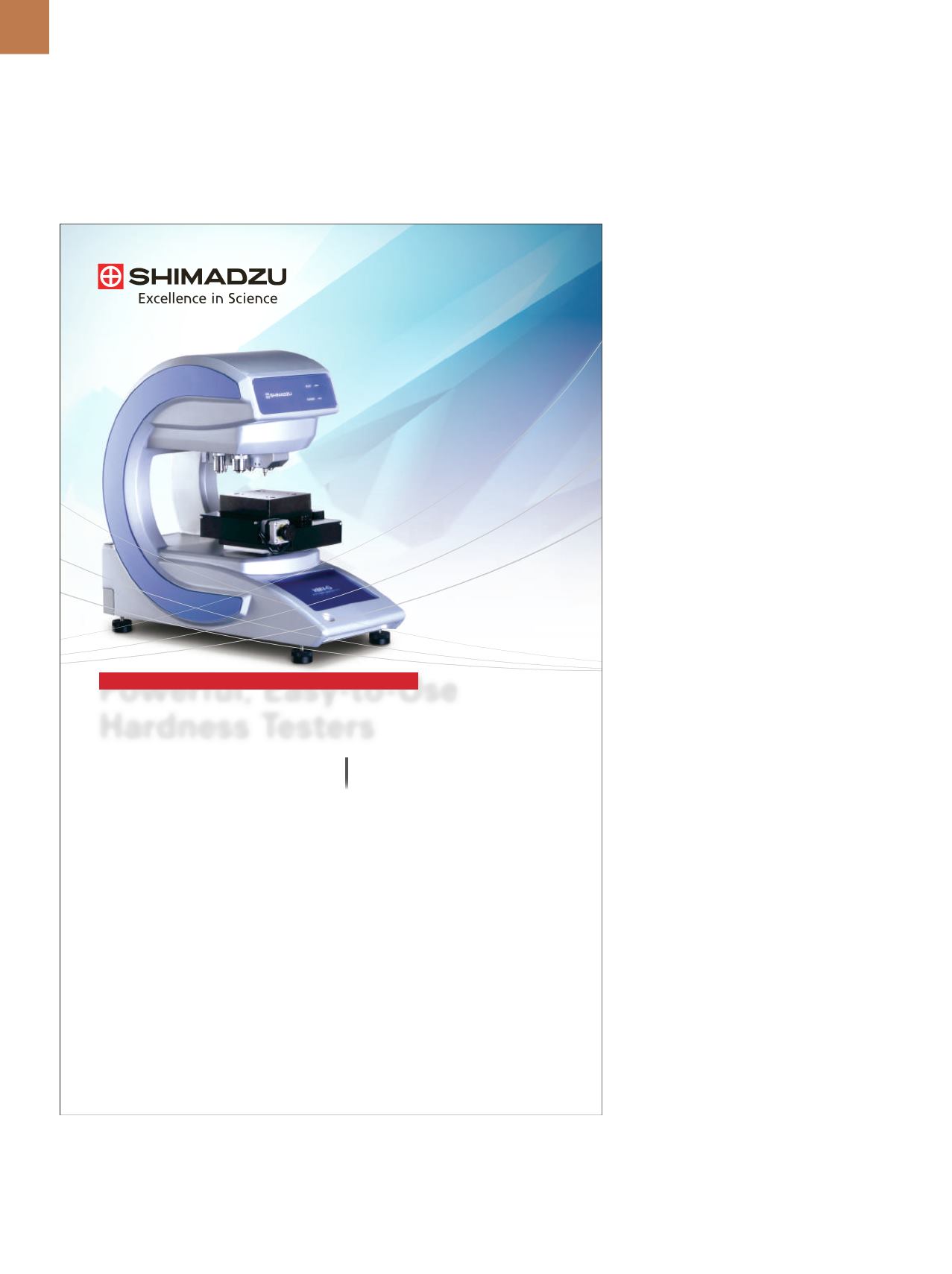

A D V A N C E D M A T E R I A L S & P R O C E S S E S | A P R I L 2 0 1 6
2 0
natural frequency of the specimen,
as installed in the test machine. A PID
controller provides a feedback loop
based on mean force (or stress), fre-
quency, and displacement, and tunes
the force exerted by the resonance
drive to the natural frequency of the
testing system.
Froma cost-of-ownership perspec-
tive, magnetic resonance systems can
be installed in most labs without infra-
structure modifications and consume
only 2% of the power of a comparable
servohydraulic test system. Operation
of the Vibrophore is straightforward, re-
quiring minimal training. Furthermore,
with few parts subject to mechanical
wear and tear, Vibrophores are reliable
and low-maintenance machines. As
an example of these machines, Zwick
recently introduced a new generation
of Vibrophore systems available in
50-1000 kN capacities and offering a
frequency range of 30-300 Hz. These
products are the result of decades of
HCF testing experience with the com-
pany’s Amsler line of high-frequency
pulsators.
The new Vibrophores use an elec-
tric drive for controlled static loading
similar to a static materials testing
machine, and a magnetic resonance
drive for controlled dynamic loading.
This design enables both dynamic
HCF evaluations and pure static test-
ing. With up to eight frequency steps
achievable through the activation of
top-mounted weights, tests can sim-
ulate changes such as partial loss
of torque due to thermal effects, or
provide additional system damping
if component heating during the test
is a problem. In addition to testing
by force or strain control, true cross-
head position is available as a control
parameter.
Strain measurement is only rel-
evant when Vibrophore systems are
used for static tests. Operating in static
mode, Zwick’s systems are often con-
figured with makroXtens extensome-
ters. The geometry of the knife edges
in these extensometers enables testing
of both round and flat specimens, mak-
ing them suitable for static testing of
critical components such as aerospace
fasteners.
~AM&P
For more information:
Markus Semrau
is product manager, Vibrophore sys-
tems, Zwick/Roell, August-Nagel-Str. 11,
D-89079 Ulm, Germany, +49.7305.100,
info@zwick.de,
www.zwick.com.
Shimadzu’s HMV-G Series of Micro Vickers hardness testers provides an operator-friendly, cost-effective solution for a wide range of hardness testing applications. Available in PC- controlled and standalone models, the HMV-G series offers an array of advanced automated functionality, while incorporating a novel frame, to provide simple, secure analysis of a wide range of samples. Shimadzu’s HMV-G Series features: ■ Automatic length measurement function ■ Novel G frame improves operability and enables testing of long and large-area samples ■ Automatic lens switching function ■ Compact, built-in CCD camera ■ Automatic sample shape recognition function ■ Routine inspection graphs function ■ Easy-to-use software Shimadzu Scientific Instruments Inc., 7102 Riverwood Dr., Columbia, MD 21046, USA Learn more. Call (800) 477-1227 or visit us online at www.ssi.shimadzu.com/HMVG Powerful, Easy-to-Use Hardness Testers In addition to the HMV-G series, Shimadzu offers a comprehensive range of testing machines that will help you exceed R&D/QA/QC requirements in the development of higher quality materials & products.

















